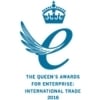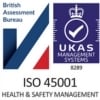The die casting space is constantly evolving, thanks to the rapid pace of technological advancements and the fluctuating market that it is engineered to support. With shifting customer demands at the heart of all change, die casting companies must constantly adapt in order to stay relevant; and of course, understanding the landscape is key to knowing where to apply focus.
So, what are the hot topics for the die casting industry in 2023? Let’s take a closer look…
1. Sustainability.
With increasing awareness of the impact of industrial activities on the environment, many die casting companies are working towards more sustainable and eco-friendly practices. The benefits are two-pronged, as these measures are often not only good for the environment, but also improve your bottom line by reducing costs associated with waste disposal, energy consumption, and raw material sourcing.
Specific eco-friendly initiatives for die casting companies include…
- Recycling. Diecasting alloys predominantly use secondary, or recycled material, and all of the excess material trimmed from our castings can be directly re-melted. This saves energy and reduces emissions associated with the extraction and production of new materials.
- Energy efficiency. Whilst we can’t deny that melting aluminium and operating the heavy machinery used in our process makes us an energy intensive industry, by investing in the latest equipment and technology this impact can be minimised. MRT’s modern facilities feature measures such as recuperative burners on our furnaces, waste heat capture on our compressors, highly efficient machine tools, and LED lighting throughout. By implementing power-saving measures such as these, die casting companies are able to reduce their carbon footprint and save on energy costs.
- Cleaner technologies. Companies which adopt cleaner technologies such as water-based lubricants instead of oil-based ones are able to significantly cut back on emissions and waste.
- Sustainable sourcing. By looking for sustainable sources of raw materials - such as highly recyclable aluminium - and using renewable energy sources to power operations, die casting companies can be eco-conscious from the ground up.
- Product design. Die casting companies are increasingly working with their customers to design products that are more sustainable - such as using lightweight materials to reduce fuel consumption - and designing productsfor easier disassembly and recycling once they reach their final application.
2. Lightweighting.
Lightweighting is an important die casting trend that is, at least in part, driven by sustainability objectives.
Lightweighting is the process of designing and manufacturing components with reduced weight, while still maintaining or improving their strength and performance. It involves the use of materials that are lighter than traditional metals, such as replacing steel with aluminium, and optimising the design of the part to reduce the amount of material needed.
By reducing weight, lightweighting can lead to significant benefits such as improved fuel efficiency in automotive and aerospace applications, reduced transportation costs, and improved handling and performance in consumer products. For example, lightweighting in the automotive industry has been a key strategy for meeting fuel economy standards and reducing greenhouse gas emissions.
Die casting is an ideal process for lightweighting because it allows for the precise control of wall thickness, which helps to optimise the weight and strength of the component. Additionally, die casting offers the ability to produce complex shapes with minimal secondary machining, which in turn reduces waste and production costs.
3. Reshoring.
The globalisation of manufacturing has led to increased competition in the industry, which has driven companies to explore new markets and find ways to remain competitive.
Reshoring refers to the practice of bringing back production and manufacturing jobs to the home country, rather than outsourcing them to ‘low-cost’ countries. There are several reasons why reshoring is happening more and more often, including…
- Quality control. Reshoring allows for better control over the quality of the finished product, as companies can oversee the entire production process from start to finish.
- Intellectual property protection. By keeping the production process local, reshoring can help protect a company's intellectual property - rather than outsourcing to countries where intellectual property laws may not be as strong.
- Faster response time. Reshoring can help companies respond more quickly to changes in customer demand, or unexpected supply chain disruptions, as they have greater control over the production process.
- Reduction in inventory. Faster response times also mean that you don’t need to hold so much safety stock, or have your working capital tied up in stock in transit.
- Economic benefits. Supporting the local economy can result in increased employment, higher wages, and increased tax revenue for the home country.
- Sustainability. Reshoring can also help to reduce the environmental impact of transportation, as goods do not need to be shipped long distances to reach the market.
As a whole, these trends are driving positive change in the die casting industry - which leads to greater efficiency, sustainability, and innovation overall.
Are you considering a die cast part for your next project?
Discover which die casting processes are best suited to your component.








